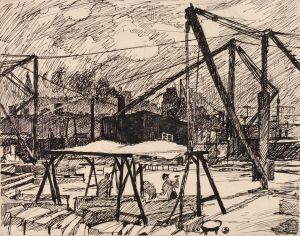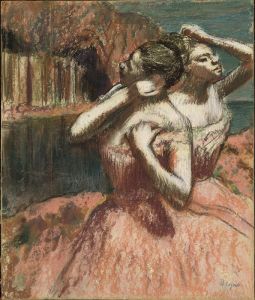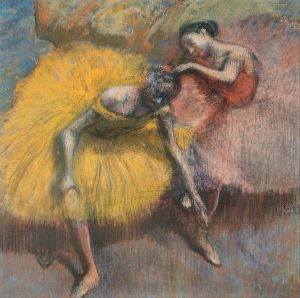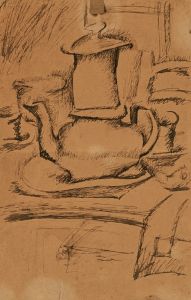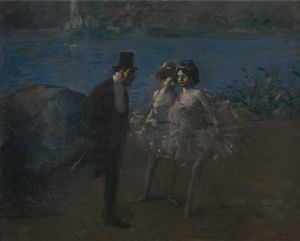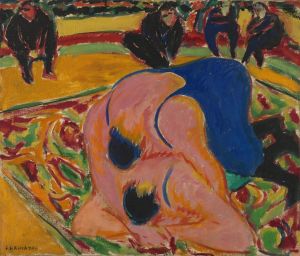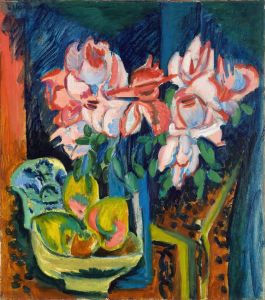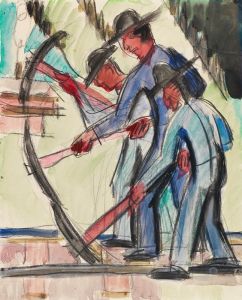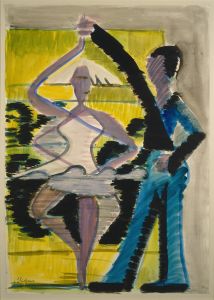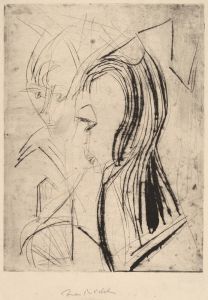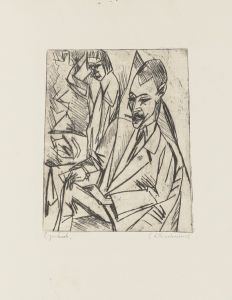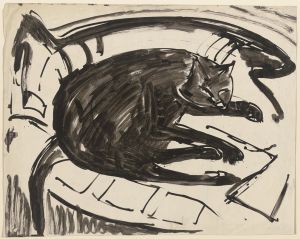
Drei Tänzerinnen
A hand-painted replica of Ernst Ludwig Kirchner’s masterpiece Drei Tänzerinnen, meticulously crafted by professional artists to capture the true essence of the original. Each piece is created with museum-quality canvas and rare mineral pigments, carefully painted by experienced artists with delicate brushstrokes and rich, layered colors to perfectly recreate the texture of the original artwork. Unlike machine-printed reproductions, this hand-painted version brings the painting to life, infused with the artist’s emotions and skill in every stroke. Whether for personal collection or home decoration, it instantly elevates the artistic atmosphere of any space.
"Drei Tänzerinnen" (Three Dancers) is a painting by the German expressionist artist Ernst Ludwig Kirchner, created in 1913. Kirchner was a founding member of the influential art group Die Brücke (The Bridge), which played a crucial role in the development of Expressionism in early 20th-century Germany. This painting is a significant example of Kirchner's work during a period when he was deeply engaged with themes of movement, modernity, and the human form.
The painting depicts three female dancers in dynamic poses, capturing the energy and fluidity of their movements. Kirchner's use of bold, vibrant colors and strong, angular lines is characteristic of his style and reflects the influence of African and Oceanic art, which he admired for its directness and emotional intensity. The dancers are rendered with exaggerated forms and expressive gestures, emphasizing their vitality and the rhythmic quality of their dance.
Kirchner's interest in dance and movement was partly inspired by his experiences in Berlin, where he moved in 1911. The city's vibrant cultural scene, including its cabarets and dance halls, provided rich material for his artistic explorations. "Drei Tänzerinnen" reflects this fascination with the modern urban experience and the ways in which it could be expressed through the human body in motion.
The composition of "Drei Tänzerinnen" is notable for its sense of immediacy and spontaneity. Kirchner often worked quickly, aiming to capture the essence of his subjects rather than their precise details. This approach is evident in the painting's loose brushwork and the way the figures seem to pulse with life. The background is simplified, focusing attention on the dancers and their dynamic interaction.
Kirchner's work, including "Drei Tänzerinnen," was part of a broader movement within Expressionism that sought to convey emotional and psychological states through art. This painting, like many of his others, can be seen as an attempt to break free from traditional artistic conventions and to explore new ways of seeing and representing the world.
"Drei Tänzerinnen" is housed in the collection of the Kunstmuseum Basel in Switzerland, which holds one of the most comprehensive collections of Kirchner's work. The museum's collection provides valuable insights into the artist's development and his contributions to modern art.
Ernst Ludwig Kirchner's career was marked by both critical acclaim and personal struggles. He served in World War I, an experience that had a profound impact on his mental health and artistic output. Despite these challenges, he continued to produce significant works until his death in 1938. Today, Kirchner is recognized as one of the leading figures of German Expressionism, and "Drei Tänzerinnen" remains an important example of his innovative approach to art.





